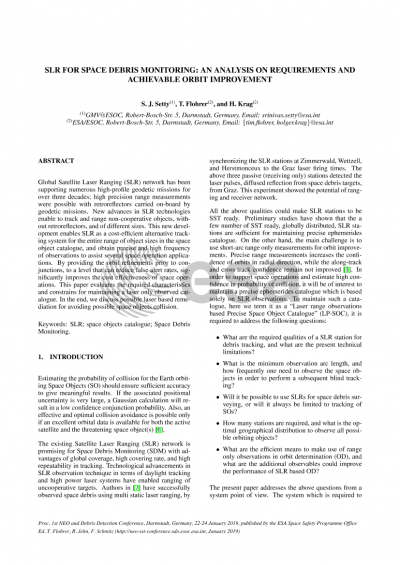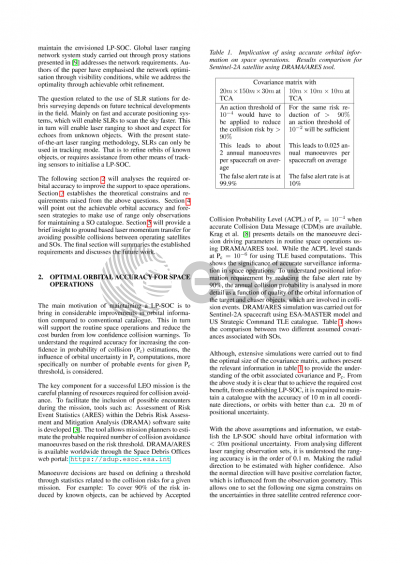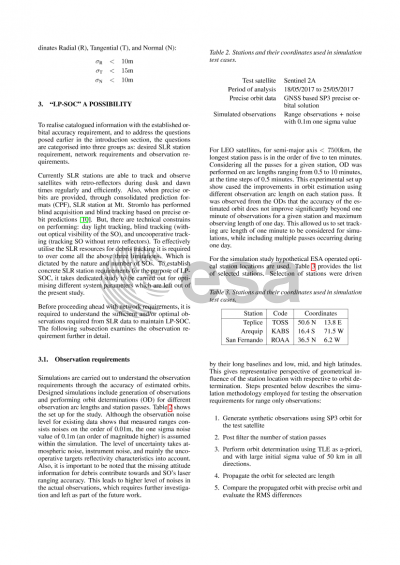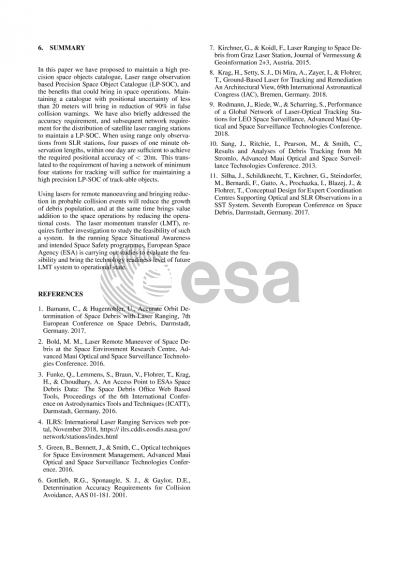Document details
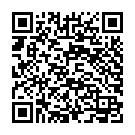
Abstract
Global Satellite Laser Ranging (SLR) network has been supporting numerous high-profile geodetic missions for over three decades. High precision range measurements were possible with on-board retroreflectors carried by geodetic missions. New advances in SLR technologies enable to track and range non-cooperative objects, without retroreflectors, and of different sizes. This new development enables SLR as a cost-efficient alternative tracking system for the entire range of object sizes in the space object catalogue. Obtaining precise data and increasing the frequency of observations assists several space operation applications. By providing the orbit refinements prior to conjunctions, to a level that can reduce false alerts rates, significantly improves the cost effectiveness of space operations.
The existing SLR network is promising for space surveillance and tracking (SST) with advantages of global coverage, high covering rate, and high repeatability in tracking. Technological advancements in SLR observation technique in terms of daylight tracking and high power laser systems have enabled ranging of uncooperative targets. These qualities make a SLR station SST ready. Preliminary studies have shown that a few number of SST ready, globally distributed, SLR stations are sufficient for maintaining precise ephemerides catalogue. The paper presents detailed analysis over existing USSTRATCOM catalogue, observation limitation of SLR stations, required orbital accuracy for laser ranging, and accuracy required for improving the confidence in conjunction assessment are presented.
On the other hand, the main challenge is to use short-arc range only measurements for orbit improvements. Precise range measurements increases the confidence of orbits in radial direction, while the along-track and cross track confidence remain not improved. In order to support space operations and estimate high confidence probability of collision, we present an observation schema to decrease the overall covariance of the estimated orbits, and results from the evaluation of the technique. The proposed method is evaluated with real SLR data and simulated observation sets for varying range of altitudes. The results showcase the advantages of incorporating SLR measurements for SST, while comparing the level of orbit improvement achievable with different scenarios.
Preview
